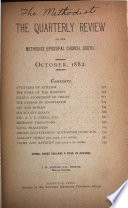 | Church and the world - 1882 - 792 pages
...illustrate each in its order: The square described on the hypothenuse of a right-angled triangle is equal to the sum of the squares described on the other two sides, is an example of knowledge obtained by demonstrative reasoning; but that George Washington loved his... | |
 | David Patrick, William Geddie - Encyclopedias and dictionaries - 1925 - 906 pages
...the right angle. The well-known property of the hypotenuse, that the square described on it is equal to the sum of the squares described on the other two sides, is proved in Euclid's 47th proposition of Book I. Hypo'thec, in Scotland a lien or security over goods... | |
 | Charles Morris - Encyclopedias and dictionaries - 1923 - 504 pages
...discovered by Pythagoras, which proves that the square described ub, Hypotenuse. on the hypotenu9e is equal to the sum of the squares described on the other two sides. Hypsometry (h * p • s0™'*-1" ) • th« •'Jr "J' measurement of heights. See Heights. Hyracotherium... | |
 | Bertha Johnston, E. Lyell Earle - Education - 1893 - 880 pages
...before. Yes, the formula is the same: "The square of the hypotenuse of a right-angled triangle is equal to the sum of the squares described on the other two sides" (book iv, p. xi); but it is our own now more than ever. As we advance we get forms of nature's crystals,... | |
 | Lancelot Hogben - Mathematics - 1968 - 662 pages
...Greek geometer taught what we call the Theorem of Pythagoras, ie that the square on the longest side of a right-angled triangle is equivalent to the sum of the squares on the other two. This very early example of block printing from an ancient edition of the Chou Pei,... | |
 | Laura Knight-Jadczyk - Antiquities - 2005 - 829 pages
...Theorem is stated thus: In a right-angled triangle the square described on the hypotenuse is equal to the sum of the squares described on the other two sides. 184 Everyone who has attended public school and paid the slightest attention in math class knows that... | |
| |